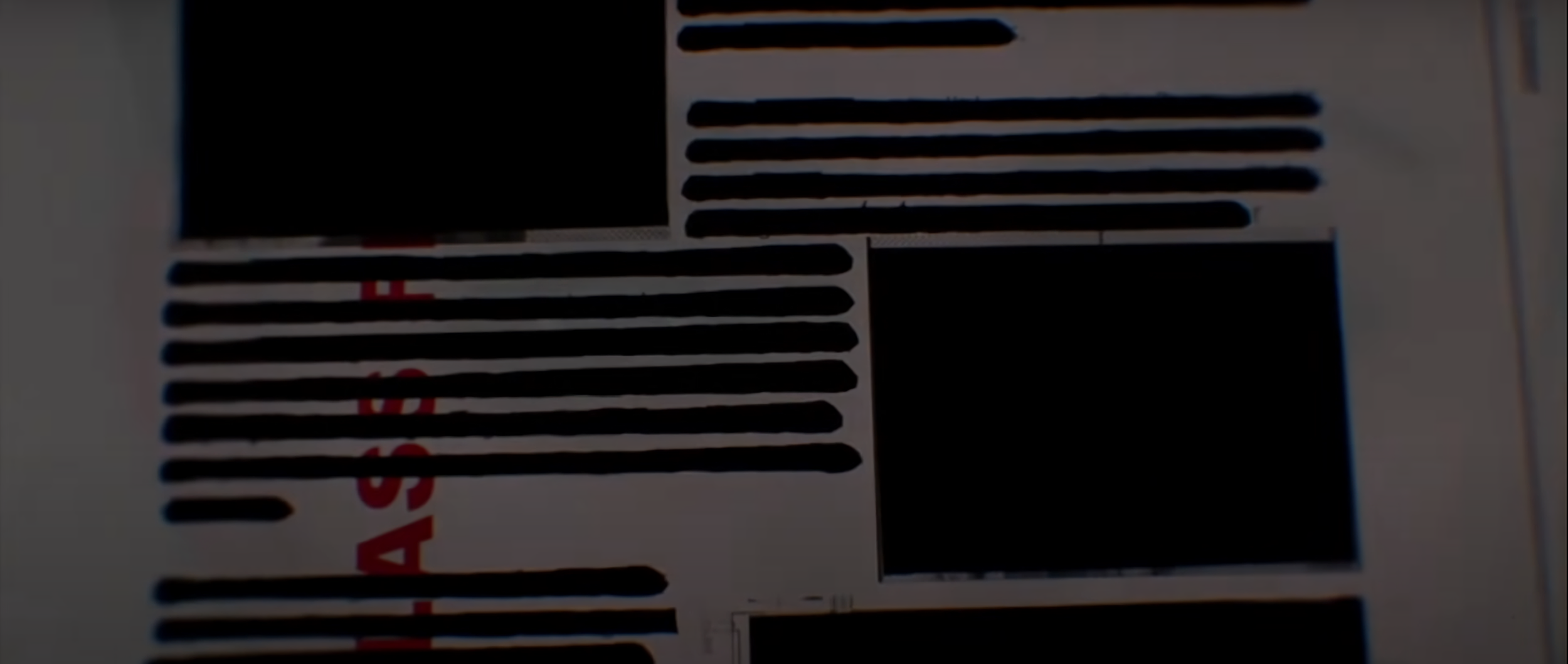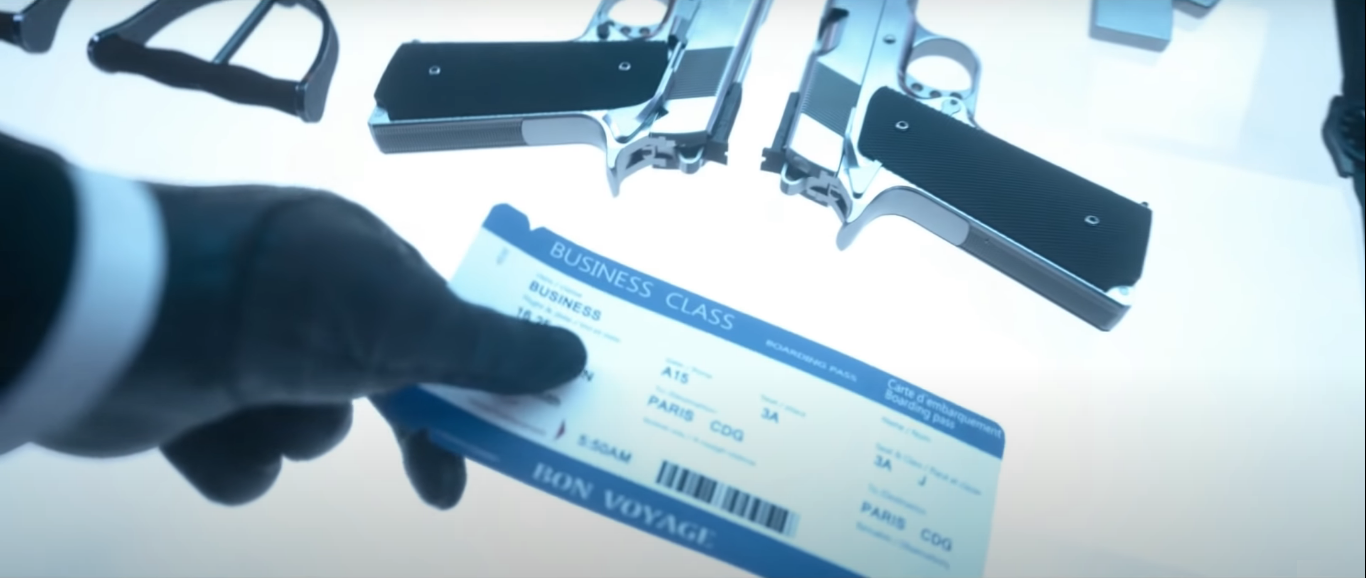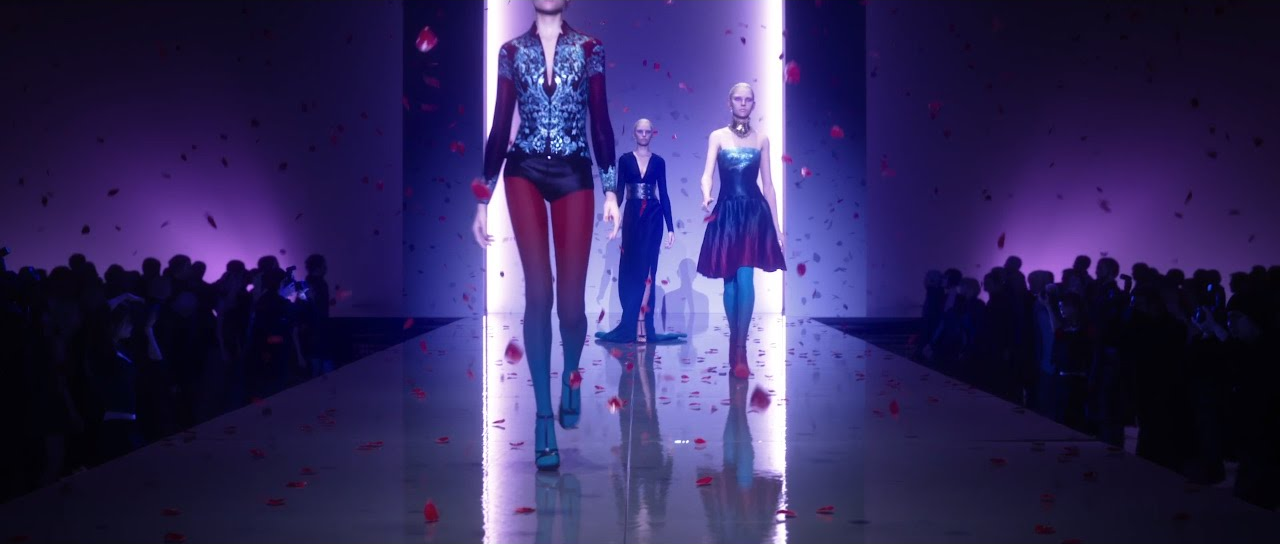
Telling people that you play Hitman for the story is like telling people that you read Playboy for the articles. They give you a conspiratorial pat on the back and laugh like they’re in on the joke. It couldn’t possibly be true. But Playboy does have interesting articles, and Hitman has an interesting story if you choose to look for it. Over twenty years and eight games, it has explored themes of identity and personhood, religion, the ethics of science, and the politics of international intelligence. In its recent installments, it’s touched upon personal freedom, the temptations of power, and the insidiousness of neutrality. Hitman acknowledges that killing bad people doesn’t always make the world a better place, then hands the player a gun and says they deserve it anyway.
Hitman begins with a simple premise. A man wakes up in a room. A mysterious voice releases him into the world with one instinct: to kill. He falls into the employ of the International Contract Agency, a murder-for-hire conglomerate that works with and against all sides. With help from his handler, Diana Burnwood, he assassinates a string of underworld figures before he finds out that something connects all of them. In the end, he learns it’s him. They’re the world’s most dangerous men, and he’s been bred from their DNA, the 47th generation in an army of enhanced clones. “Agent 47” is a weapon, yet still a human being. Though his hand has been dealt for him, he realizes that he can choose how he plays it.
Over time, 47 becomes a legend, thwarting international conspiracies and mastering every instrument in the orchestra of death. The player has 47’s whole pool of experience at their disposal, and no orders except to get the job done as they see fit. The series takes the stealth sandbox to its logical extreme. Anything can become a murder weapon, and 47 can become anyone. Once he incapacitates a character, he can take their clothes, which allow him to blend in, carry forbidden weapons, or access restricted areas. In the right outfit, guards defer to him, and targets trust him enough to meet him alone or follow him to secluded areas. This innovative disguise mechanic is Hitman’s bedrock, and while others have tried it on, nobody wears it quite like them.
Hitman has also cemented its legacy with another franchise hallmark: its vicious sense of humor. Hitman encourages the kind of creative virtual sadism that used to send parents to Congress and the evening news. In 2006, Blood Money came under fire for its ad campaign, which featured hypothetical targets in graphic death tableaux. Hot Coffee it wasn’t, but it did establish that the franchise was willing to flirt with controversy and push the boundaries of taste. Through ratings, achievements, and simply allowing the option in the first place, Hitman hands the player a devious idea - make it look like an accident. Sure, you could gun your targets down like an ordinary goon. Or you could set the stage to hoist them by their own petard. Loose winches, high ledges, and dozens of other environmental hazards await players who like their murder spiced with irony, humiliation, or revenge. It goes right, and the thrill of poetic justice is unsurpassed. It goes wrong, and the schadenfreude can be hilarious. When a bug caused a thrown briefcase to follow its victim out to sea, the playerbase loved it so much that the developers kept it on as a feature. Hitman crosses power fantasy, spy drama, and the utterly surreal, and it thrives when it can turn its cynical comedy on itself.
nyoom
I’ve followed the exploits of IO Interactive’s cue-ball killer and his prim, enigmatic handler for a long time. I came to it about a decade ago, when my overheating laptop limited me to older games and Let’s Plays on YouTube. From the outset, it inspired that feeling every writer knows about, the heart-pounding thrill-fury of Aw Man, Why Didn’t I Think of That. Espionage, intrigue, power struggles, globe-trotting locales, the suits, the guns - it was the kind of story I wanted to write. I was sold. In an industry that tended toward stubbly heroes and grittier crime, Hitman painted stark video game violence with an elegant touch. I also found an unlikely role model in Diana, who so far has avoided many of the writing pitfalls common to video game women. She navigated the corporate murder business and thwarted the men who tried to take her down a peg with a sharp outfit and a dry entendre. To a girl who wanted to dress better and assert herself in the world, it felt aspirational, in the way that we imitate and roleplay when we’re young.
A friend of mine once joked that 47 has everything I look for in a man: mysterious, talented, loyal, and groomed to the gills. Conversely, another friend has criticized the franchise for playing with spy tropes while refusing to engage with the real-world ramifications of them. That’s an interesting conversation, and one too important to adequately cover in the scope of this project. The one thing we can all agree on is that whether 47 serves up death by knife, wire, or falling sculpture, he makes it look good. After all, when you’re the best in the world, the only thing left to do is do it with style.

I live by a motto that I read in Errol Flynn’s salacious autobiography in college: “When you’re down and out, wear your best suit.” After writing, clothes are my second-favorite way to express myself, and I’ve always been interested in how storytelling and fashion interact. After all, the way we dress tells a powerful personal narrative: who we are, what we like, and how we want - or don’t want - to be perceived.
In 2012, I cooked up a basic guide to drawing suits, meant for novice artists who struggled with the weight and shape of details like lapels. It soon made its way to r/malefashionadvice, to a colorful response. Later, a suit shop used it in their banner ads without telling me. I found the whole thing funny, so I stuck with it. Eight years later, as I struggled for gamedev jobs, I realized I could write about it, too. First came a short post on establishing characterization through clothing. Then a deep dive on Good Omens’ Aziraphale. Then one on Resident Evil’s Lady Dimitrescu. By then, I’d gotten a hit of the good stuff, and I became aware that I had to do something big and bombastic about Hitman. It’s becoming a problem with me, isn’t it?
What I am not is a tailor, an employee of a couture house, or anything else adjacent to the fashion industry. After five years in game narrative, I’m still a fan at heart, and that inspires me to find deeper meaning in a story’s relationship to its visuals. I research what I write about to the best of my ability, but terms change, and so does the meaning of style over the years. Fashion inspires strong opinions, and reasonable sources can differ. Hitman contains both the sublime and the ridiculous. We’re all here to have fun.

In a piece of visual media, every image says something. And the people allowed to work on a twenty-year-old grande dame of a series like Hitman are very good at their jobs. An army of modelers, artists, and level designers didn’t place a marble bust on a shelf or yellow birds on a concrete wall for no reason. They did it because it sets an atmosphere and sends messages about Hitman’s world, and so do the ways that its three-dimensional denizens dress. In fact, I’d argue that a sense of fashion-consciousness is inextricable from the premise of Hitman itself. This is a franchise where the core gameplay loop involves changing outfits to deceive, dispatch, and disappear. It sets the first mission in a trilogy designed to redefine the tone of the series at a fashion show. It creates a plot twist that puts decades of loyalty to the test with one shot of a lapel pin on a character’s coat.
There’s a fancy term for this subject. It’s called the “semiotics of dress,” or “how people use clothing and adornments to signify various cultural and societal positions.” It touches on everything from anthropology to economics to - as I mentioned earlier - our relationship with our self-image. The fact that there’s an academic field around the cultural coding of fashion fascinates me, and I guess I shouldn’t be surprised that it exists. But I haven’t studied semiotics, so I don’t want to venture too formally down that road, especially when it could make the project less accessible. My hope is that people who haven’t played the games will still be able to follow along, and that fans may see their favorite levels or characters in a new light. Either way, I win, because I get to write a lot about clothes. And in the world of Hitman, clothes matter. Let’s talk about why.
(A quick house-cleaning note: this project features a large number of screenshots, promotional material, and other images from the Hitman series. All of them are © IO Interactive, unless they’re obviously not. This is a non-commercial project. They’re only there for reference purposes.)





